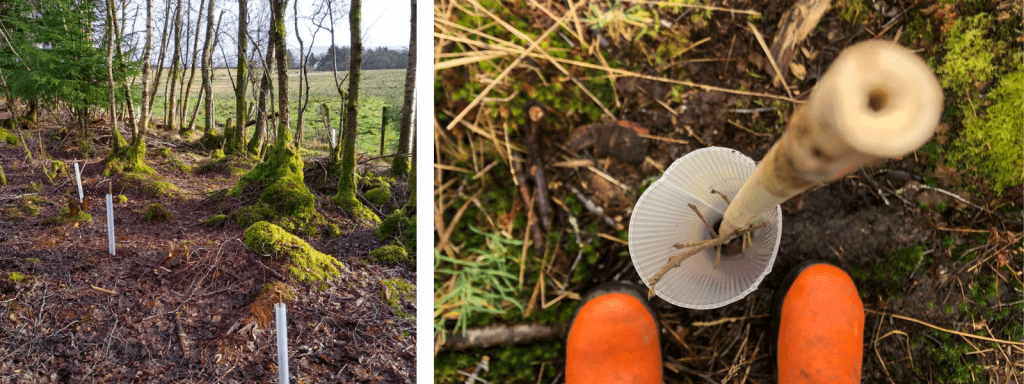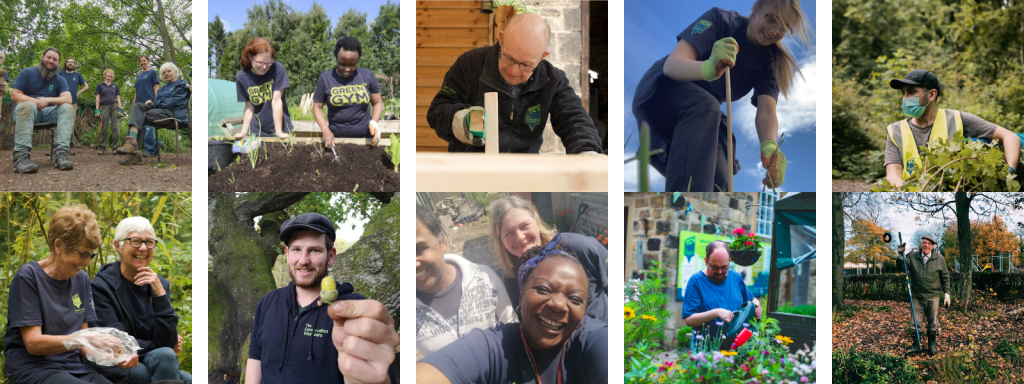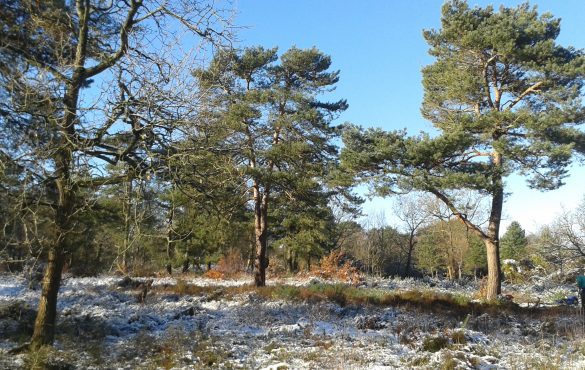Together we continue to smash our tree-planting targets, planting millions of trees for climate, wildlife and communities!
But we have only just begun. With the help of thousands of community groups and volunteers like you, we are going further than ever before with I Dig Trees – claim your free trees here and find out our rather ambitious tree-planting target!
Here Claire from Eddard Wood explains how she is using these free trees to replace rhododendron, a non-native invasive species within the UK that, if left unchecked, can threaten a variety of natural habitats and the associated flora and fauna…
Free trees to replace invasive species
Eddard wood is a 6-acre plot in the Trossachs just east of Loch Lomond. It is part of Finnery wood, a former plantation which we think used to be home to Sitka spruce. After it was last clear felled, probably around the 1990s, the owner planted some rhododendron, apparently for ground cover to support shooting, which has since done what rhododendron does, spreading densely across large areas of the land – probably taking up around 2.5-3 acres of our plot when we took it on. The other dominant feature of the land is the pioneer species silver birch, and much of the rest of Eddard was covered in crowded, thin trees fighting for light.

Clearing rhododendron and replanting with native species for wildlife
We have been looking after Eddard for about 18 months, and have already cleared over an acre of rhododendron – painstakingly cutting the branches and applying herbicide directly to the roots, then leaving the land to recover before replanting. We have been either burning or chipping the huge mountains of waste we remove. The chips can be used to build up paths as some areas of the plot are a bit boggy.
Now that we have cleared some significant spaces we have been delighted to start planting some native species that will thrive and provide some different habitats for local wildlife. Our current regular visitors include pine martens, robins, long-tailed & coal tits, buzzards, wrens, song thrushes and tree creepers. We also hear cuckoos, woodpeckers and owls (not sure which kind yet). We know there are so many more birds and animals in the vicinity who need shelter and food and we hope to provide it as we re-establish the plants they need.

Hedging and tree planting to restore biodiversity
Our first delivery from The Conservation Volunteers came in mid-January – 150 hedging plants – which we planted along the southern boundary of the plot. We used dog rose near the entrance and a mixture of hazel and hawthorn along the curved edge. We planted dogwood in a wetter area as we know it’s more tolerant of those conditions, and blackthorn in a raised edge further towards the north east corner which drains well and will get good light.

Our second TCV delivery arrived in early February. This time we received another 50 hedging plants (which allowed us to extend the fledgling hedges planted a few weeks before) and 100 trees (oak, beech, rowan, hornbeam and alder). We put some of these into areas cleared of rhododendron last year and ready for some new life, and elsewhere in the wood where we have thinned the birch. We were especially excited to receive the alder as we only have a couple of those on the land already, and we know they will be well suited to grow in the boggier areas. We have found a few tiny oak seedlings springing up naturally (presumably dropped by passing birds or other wildlife as there are no large oak in the immediate vicinity), so we hope that the larger TCV saplings will settle in well.

Planting trees for mindfulness
We had good weather for our recent tree planting day and our volunteer helper (an expert in mindfulness!) talked about how enjoyable it was to connect with the earth and focus only on this one task for hours at a time – walking the land to find a good spot for each tree, making space for it and settling it into its new home.

Thank you for the free trees
We are excited to be part of this year’s I Dig Trees campaign, and adding 300 TCV saplings to the space which used to be dark and crowded with rhododendron – blocking native species from growing – has been a huge boost to the local diversity.
We would not have achieved this much planting so soon without TCV’s support. We will take great care of them and make sure they have the space and nutrients they need to flourish. Thank you!

We’d like to say a huge thanks to Claire from Eddard Wood for contributing this I Dig Trees guest blog.
The Conservation Volunteers is helping people like you to plant more trees. Claim your free trees here.
Keep up to date with the latest news and activities from The Conservation Volunteers by following on Twitter, Facebook, LinkedIn and Instagram. You can also sign up to receive our Greenzine newsletter for more ways to get involved.





